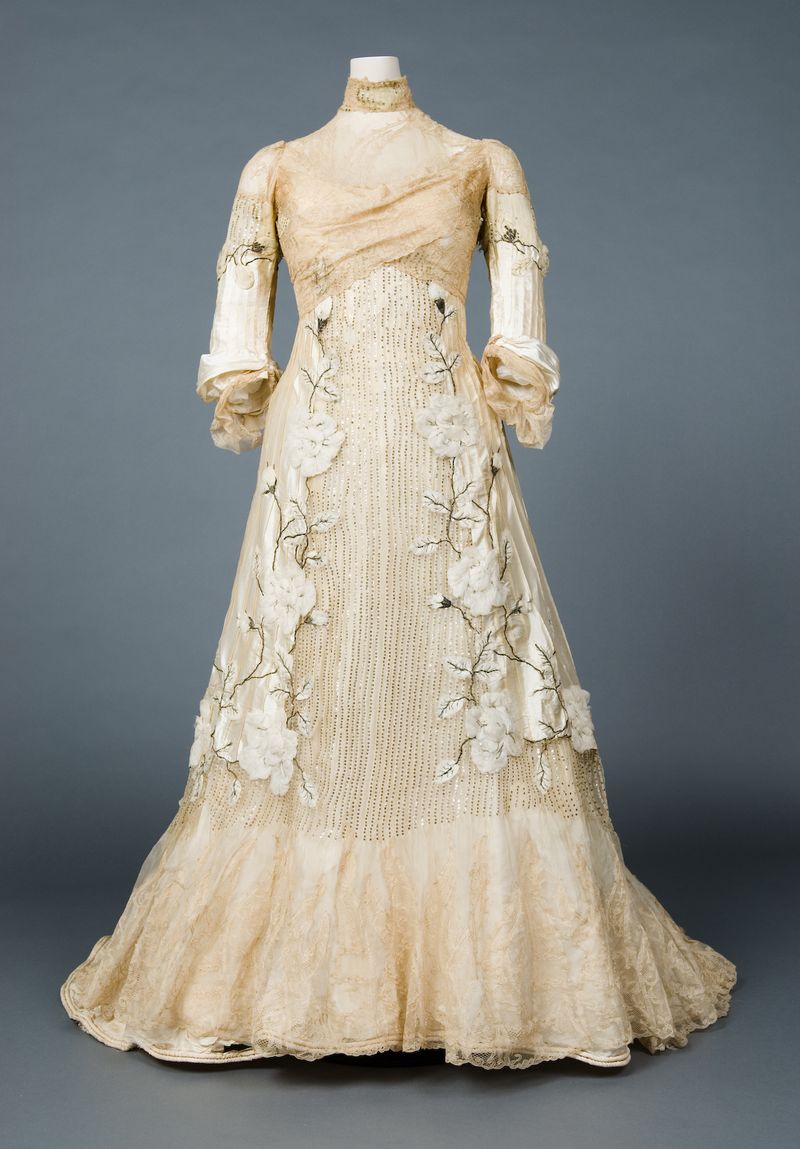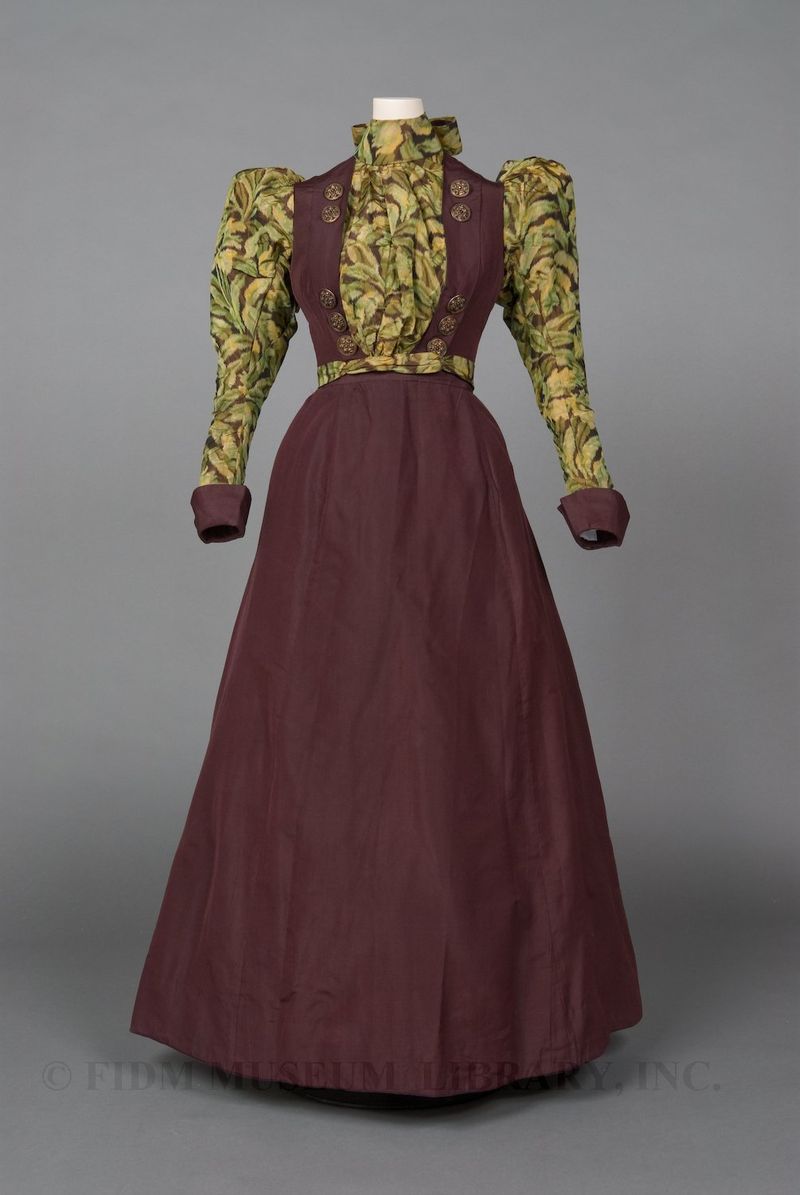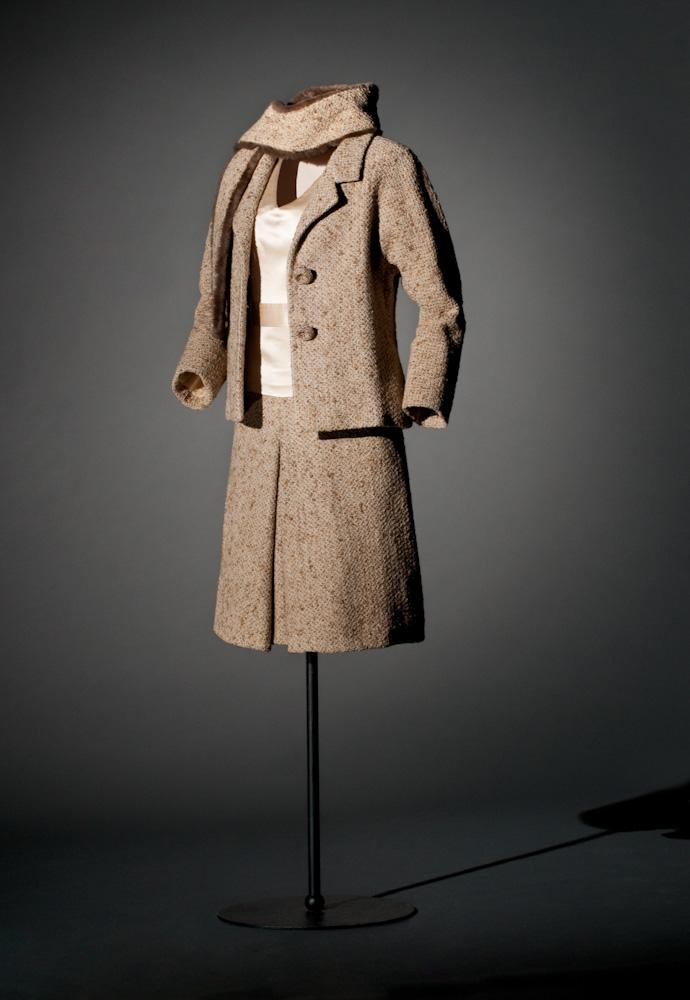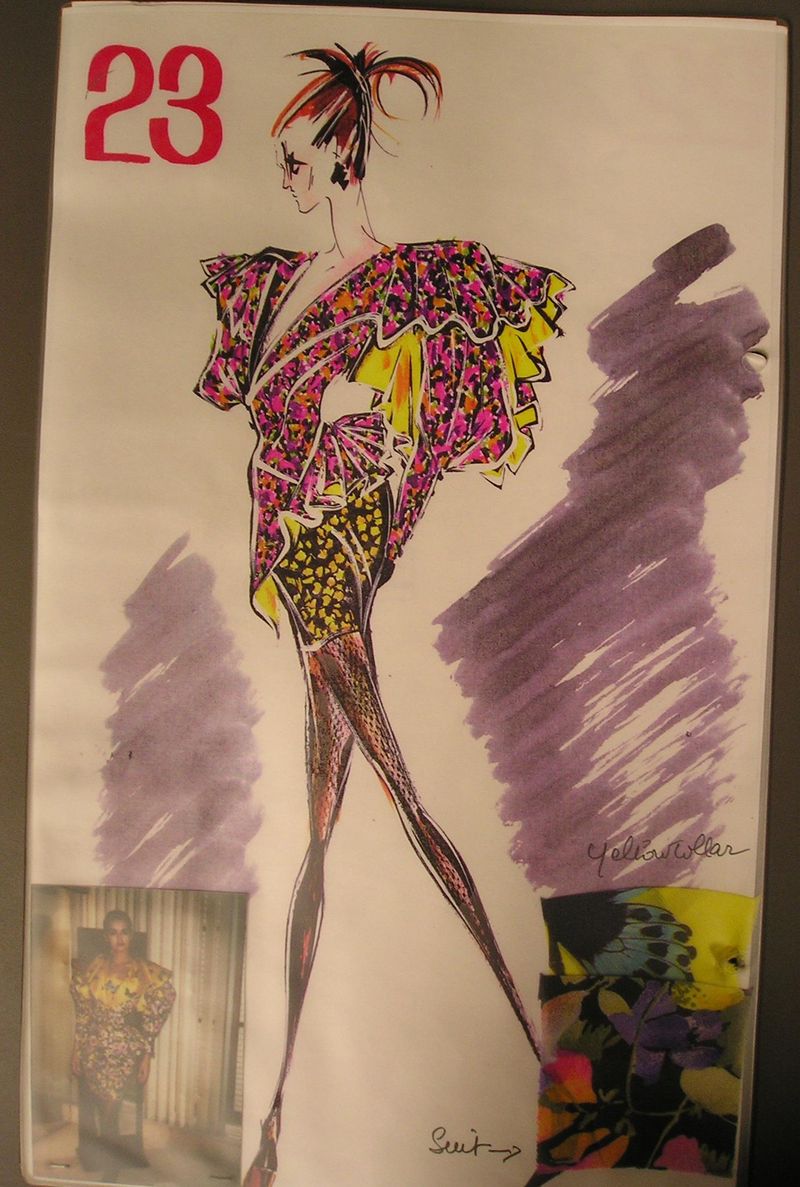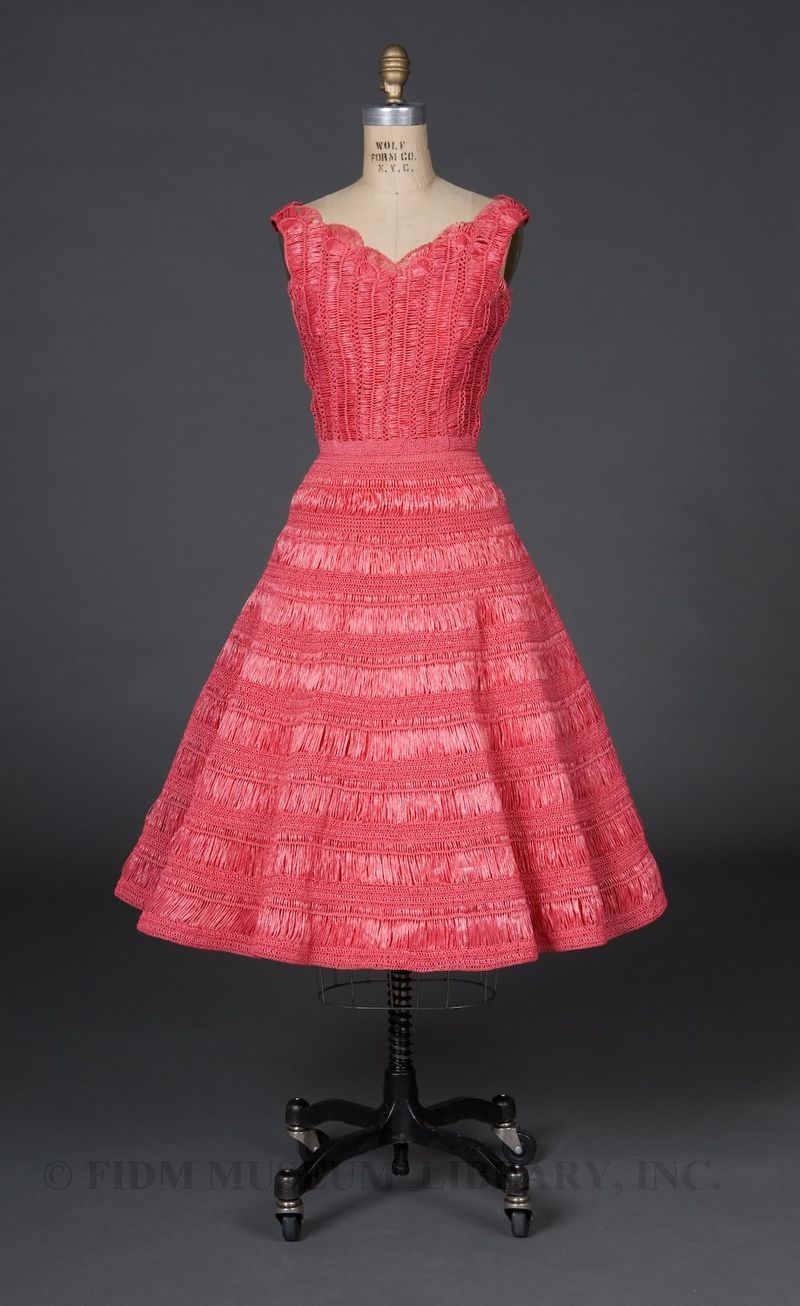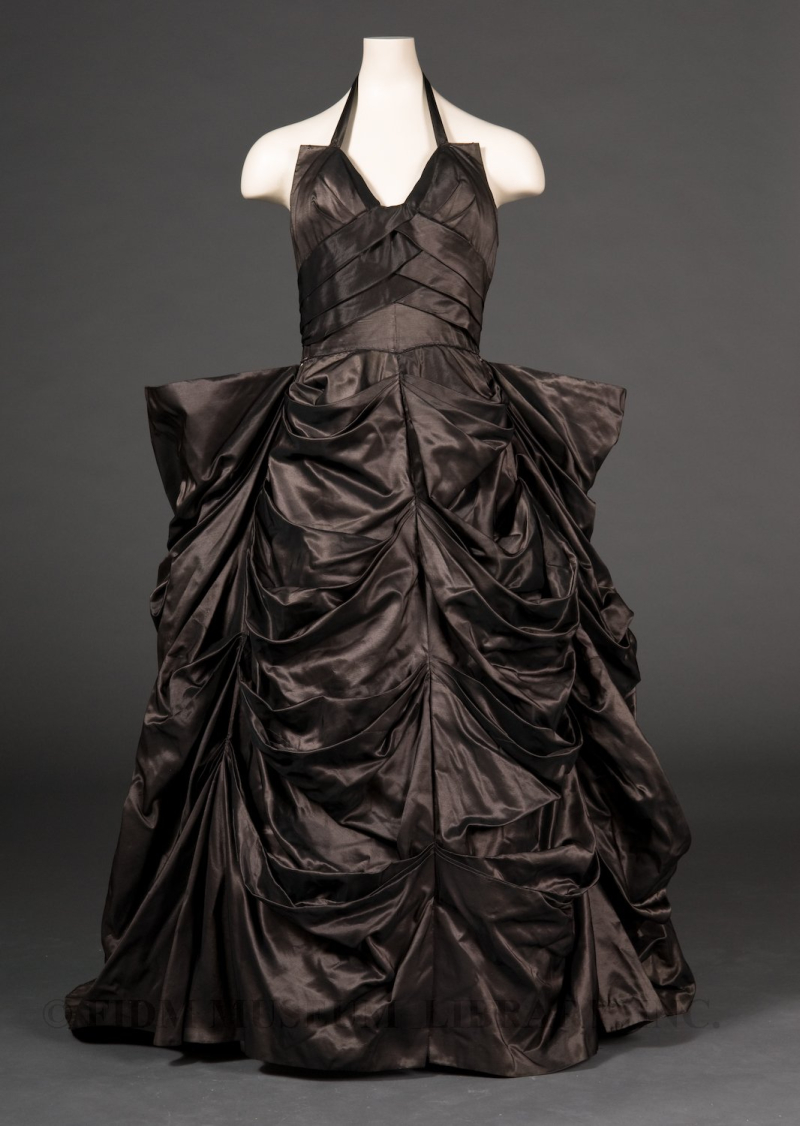This website uses cookies so that we can provide you with the best user experience possible. Cookie information is stored in your browser and performs functions such as recognising you when you return to our website and helping our team to understand which sections of the website you find most interesting and useful.
Did you know that working at a museum requires ace detective skills? In this blog post, Associate Curator Christina Johnson describes her research on a evening gown in our collection. This research, aka sleuthing, led to a wealth of knowledge about... Read Article ››
Dress form, mannequin or floating form?
Regular readers of this blog have probably noticed the variety of forms we use to display objects from the FIDM Museum collection. When we photograph an object for in-house documentary purposes, it's usually dressed on a headless dress form or mannequin.... Read Article ››
Day ensemble, 1894-1895
In 2006, the FIDM Museum received a large donation of garments and accessories spanning almost 100 years of fashion history. With garments dating from about 1850 to the late 1940s, the objects in this donation provide a window into the evolution of... Read Article ››
High Style: Betsy Bloomingdale and the Haute Couture video!
For those of you who asked for more video after watching The Couture Process, you are in luck today! The FIDM Video Gallery, where you will find various FIDM related videos, currently features a short segment titled “Opening Party: Betsy... Read Article ››
The Couture Process
Our current exhibition, High Style: Betsy Bloomingdale and the Haute Couture, explores the world of haute couture through the experiences of Betsy Bloomingdale. To complement the ensembles on exhibition, FIDM Productions created a video documentary featuring... Read Article ››
Preserving the Ann Getty Fashion Collection
Behind every great museum is a great library. The FIDM Museum is fortunate to have access to the FIDM Library, which houses a great collection of design oriented books. Today's post focuses on a preservation project completed by Rachel Clarke, FIDM... Read Article ››
1870s Wedding Dress
If you are a regular reader of this blog, you almost certainly believe that sartorial choices are made by individuals to create aspirational versions of themselves, i.e. you dress in the fashion of the person you want, or believe yourself, to be. Given that... Read Article ››
Hairpin lace
When this hairpin lace dress was donated to the FIDM Museum in 2007, we had to give ourselves a crash course, because we weren't familiar with this form of handwork. Worked on a small, hand-held "fork" or loom with a crochet hook, hairpin lace... Read Article ››
Adrian Ltd.
“What must be admired most in Adrian’s fashions is their construction; he is an architect, balancing proportions and studying every line. His approach is original and frequently unconventional, but that is what makes the viewing of an Adrian... Read Article ››
Just a glimpse…
Now that you’ve been introduced to the FIDM Museum, you’re probably wondering where and how we’ve acquired our objects. Museums acquire new objects in a variety of ways, but purchases, bequests and donations are the most common avenues by... Read Article ››

